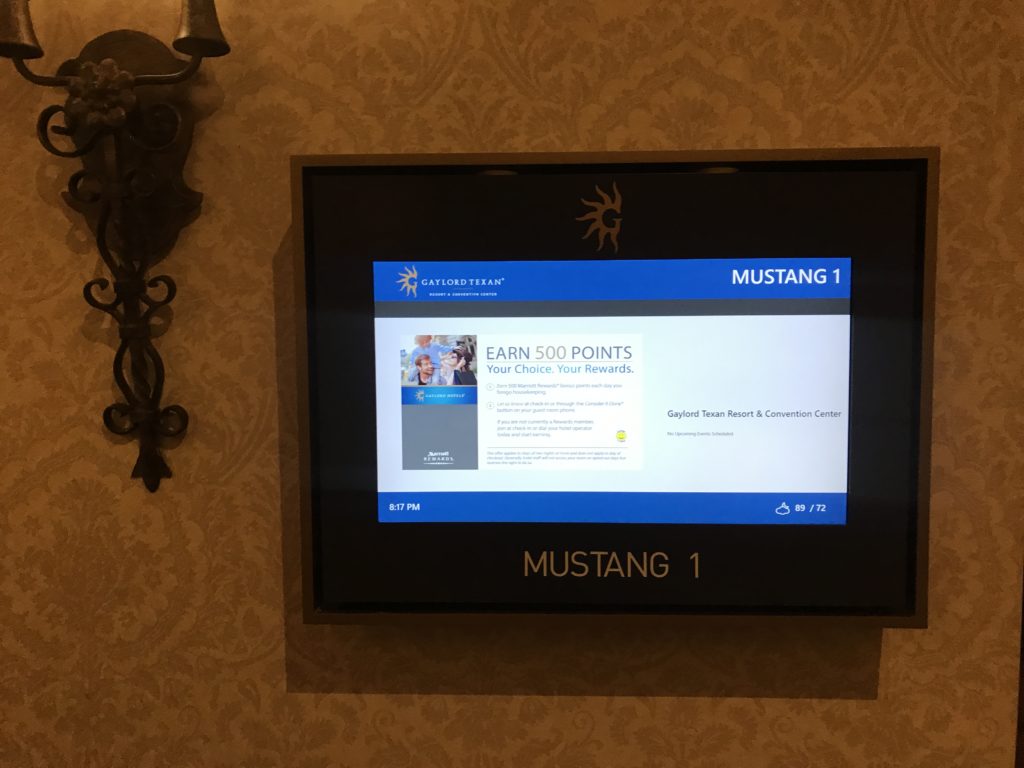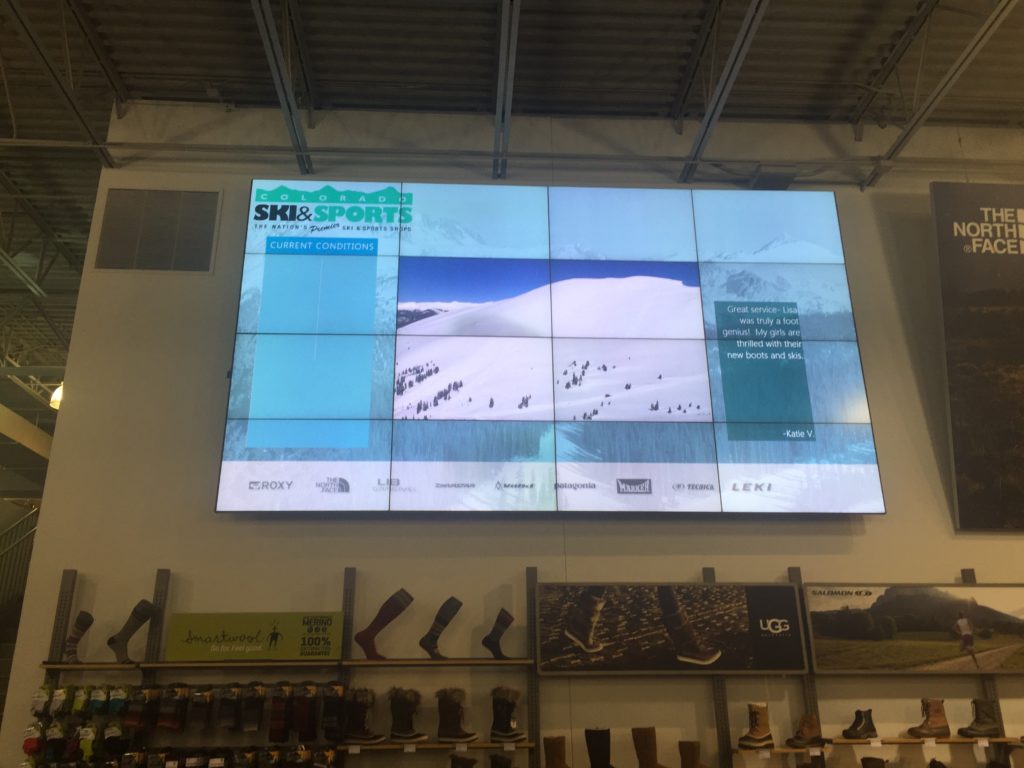Of all the digital signage in use, the video wall is the most impressive. Used in hotels, casinos, corporate headquarters, government installations, bars, hospitals and more digital video walls capture the attention of everyone in the room no matter where they are hung.
Traditionally, video walls are comprised of numerous digital displays in a large rectangle. You’ve seen these in bars where the big game is showing. But rectangular digital displays are also used for branding, such as the install we did in Mazda showrooms across the country. They used digital video walls to showcase their cars and reinforce their brand message. Technology companies and some police and fire rescue companies use video walls to analyze up to the minute statistics. Think about the large video walls used at NASA when the space shuttle launches.
But some companies use them more creatively by laying the displays in a more abstract arrangement to showcase artwork or make a more memorable presentation of the information they are providing.
Regardless of layout, the beautiful thing about video walls is that there is no resolution restriction on images. Using high definition displays, a video wall can display massive images in fine detail. And, because LCD and LED displays are backlit, the quality of the picture works in any kind of lighting.






